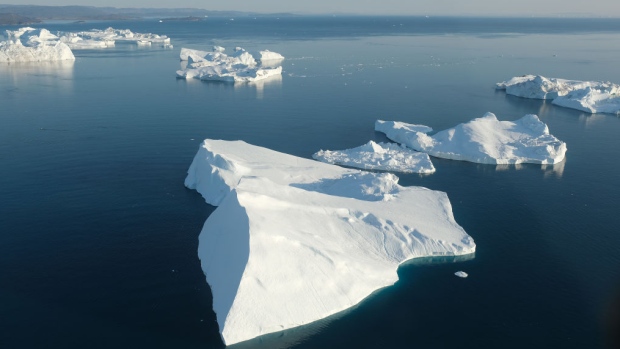Aug 16, 2019
Can Trump actually buy Greenland? The short answer is no
, Bloomberg News

U.S. President Donald Trump has reportedly expressed an interest in buying Greenland, the world’s biggest island and a self-ruling territory of Denmark. While the seriousness of his intentions is unclear -- and the initial response from the other side of the imagined transaction was a sturdy "no" -- the story raises questions as to whether such a transaction is even feasible.
1. Why would Trump want to buy Greenland?
A real estate baron before his turn to politics, Trump has a history of analyzing geopolitical issues through the lens of a property developer. During his 2018 meeting with Kim Jong Un, for example, Trump spoke of the potential he sees for beach hotels and condos in North Korea. Plus, as Trump surely knows, other U.S. presidents have made their mark in history for such grand ideas.
2. Why is Greenland interesting for the U.S.?
Besides being bigger than Mexico and Saudi Arabia, Greenland has abundant resources and a strategic location near the warming Arctic. Located in the northern Atlantic Ocean between Europe and America, the island has long been a nexus of tensions among the U.S., Russia, Canada, Denmark and Norway. It’s already home to a U.S. air base and radar station. In 1968, a B-52 bomber carrying nuclear weapons crashed near the Thule base in northwestern Greenland, causing radioactive contamination. More recently, Denmark stopped China from gaining a foothold on its territory by agreeing to co-fund the construction of two new airports.
3. Is the idea totally outlandish?
Until a century ago, these kinds of transactions were not unusual: The U.S. bought the territory of Louisiana from France for US$15 million in 1803, and Andrew Johnson is remembered as the president who oversaw the acquisition of Alaska from Russia in 1867. There’s even a precedent involving Denmark. The government in Copenhagen sold what are now known as the U.S. Virgin Islands in 1917. There are in fact plenty of other islands for sale, but they tend to be smaller and located in warmer climates. But as the BBC points out, Joseph Blocher of the Duke University School of Law wrote in 2012 that the "market for sovereign territory seems to have dried up" as it does "not seem to be for sale."
4. How much would Greenland cost to buy?
Since the 830,000 square-mile-island isn’t currently on the market, there are no valuations available. However, for a sense of how much it might be worth, it’s worth noting that its gross domestic product totaled just over US$2.7 billion in 2017. The island receives an annual subsidy of about US$500 million from Denmark. For perspective, the purchase price of Alaska in 1867, US$7.2 million, would translate to just US$125 million today -- which most would agree would be quite a bargain.
5. How would Trump go about buying Greenland?
It’s unclear. Adjunct Professor Rasmus Leander Nielsen of Greenland University has told local media that Denmark can’t sell Greenland because its home-rule law of 2009 “clearly states that Greenlanders are their own people.” Trump’s best hope would be for the territory to gain independence and then choose to arrange a sale to the U.S. As it turns out, breaking away from Denmark has been discussed in Greenland, where advocates of independence have touted 2021, the 300th anniversary of colonization, as a possible leave date. One argument in favour of independence is that Greenland should have a closer association with North America, which is much nearer than Denmark.
6. Could Trump do this on his own?
Under the U.S. Constitution, the U.S. Congress would have to approve money for any such purchase. But Trump has shown a willingness to try to go around Congress’s power of the purse. When it refused to appropriate money for more fencing on the U.S.-Mexico border, Trump raided the Pentagon’s budget to find funds for it -- and the Supreme Court backed him up.
7. What might the next step be?
According to the New York Times, skeptical Trump advisers have told him they will investigate the matter further, but only because they’d rather not tell him that the purchase is impossible. Trump will have an opportunity to discuss the matter personally with Danish Prime Minister Mette Frederiksen when the two meet in Copenhagen on Sept. 2-3.
The Reference Shelf
- All about Greenland, per the BBC.
- Some Russians lament selling Alaska, 150 years later.
- About Greenland’s movement for independence from Denmark.
- Bloomberg Opinion: Leonid Bershidsky says the idea isn’t crazy.
--With assistance from Erik Wasson
